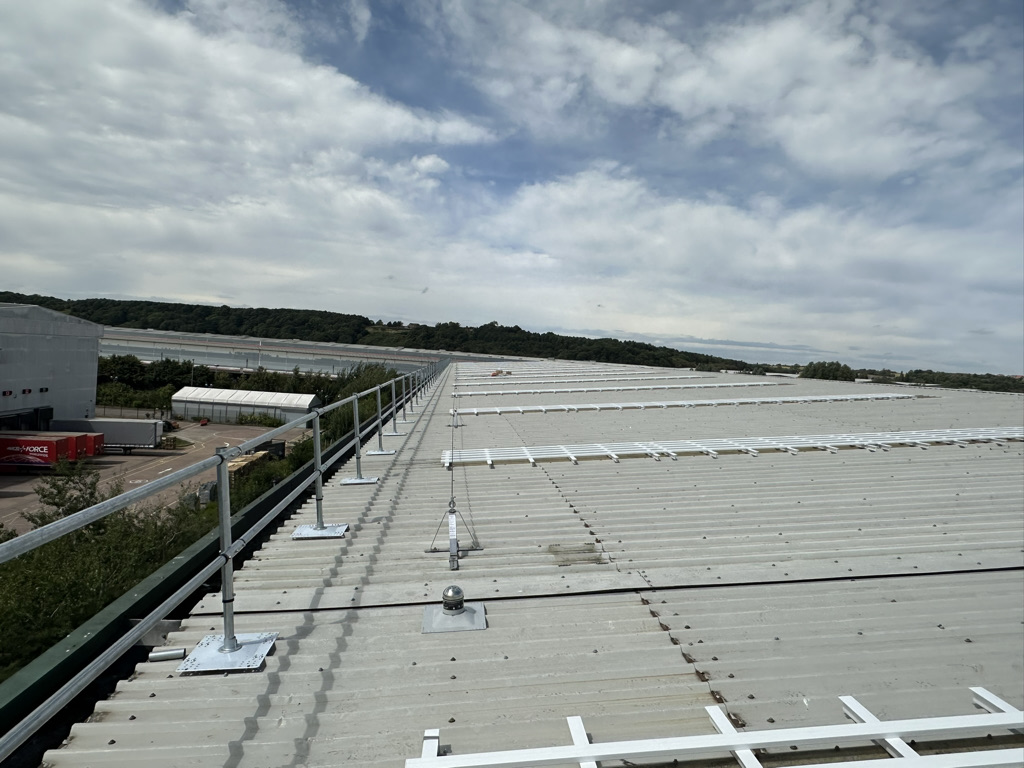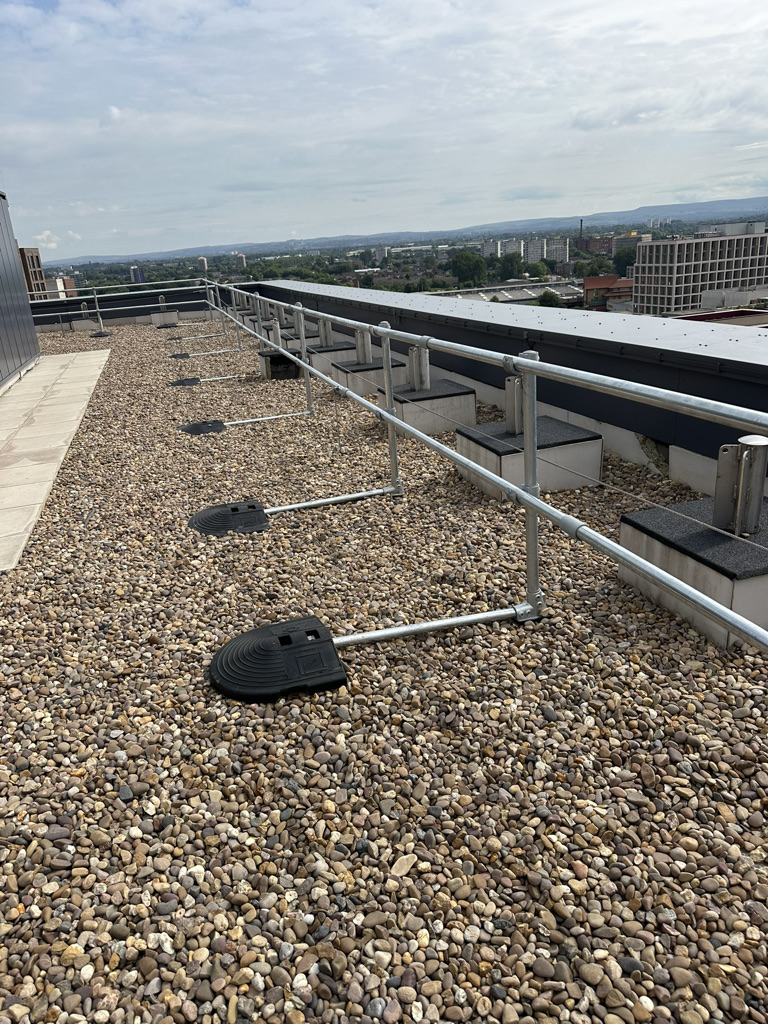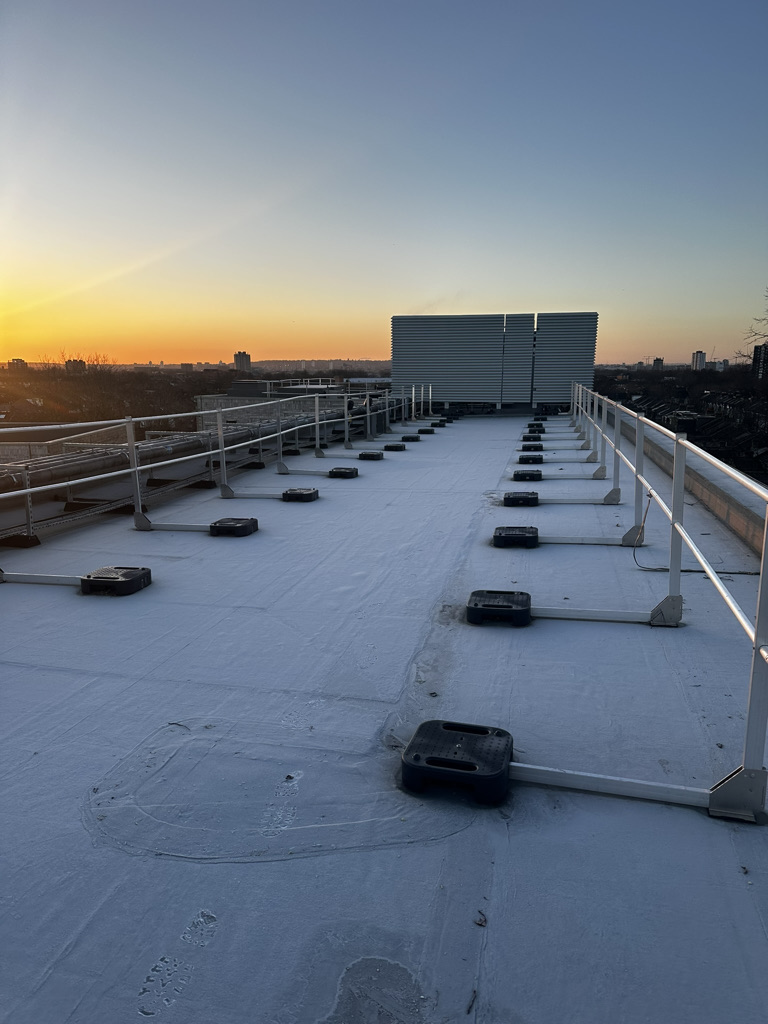GUARDRAIL / BARRIERS
COLLECTIVE PERIMETER PROTECTION
One of the best ways of reducing risk when working at height is to use Guardrail & Barriers this Prevents people from reaching the fall hazard by creating a barrier between the person and the fall hazard
this allows Safe safe accessing areas or flat roofs to carry out essential building, repair and maintenance work,
a safety barrier collective roof edge protection system can make a major contribution to minimising danger. Falling from height
There are a number of types of products available but these are Generally Categorised as either permanent guardrail or temporary Guardrail. if you need any help with your Guardrail Safety Barriers Edge Protection or Demarcation system Safe Access Roof Solutions


FREESTANDING EDGE PROTECTION
Cantilevered guardrail systems are the most popular form of edge protection because they don’t need to be fixed to the roof or its membrane. This overcomes the potential for costly leaks or damage to the surface.
Systems can be quickly and easily installed and are suitable for virtually any configuration of flat roof with a pitch up to 10°.
at dash4safety collective freestanding guardrail solutions include standard vertical, raked, and radiused systems. We can also install a collapsible system that folds down. This protects the building’s aesthetics when fall protection is not needed. We also do a demarcation system where handrail or barrier is not possible to install
THE BEST SOLUTION FOR YOUR REQUIREMENTS
Not sure what solution you need? Our team of qualified engineers will conduct a site survey or work to your drawings/specifications. They’ll then advise you on the best solution for your requirements and budget.
If freestanding is not suitable for your roof, we can provide top fix guardrails for metal roofs. And if space is an issue, we have systems that can fix to the top of a parapet or side of the building.
Our range of freestanding and fixed guardrails are tested to UK and EU safety standards, including:
- EN 13374 Class A
- EN ISO 14122
- BS 13700: 2021
- BS 6399: Part 2 code of practice for wind loads

